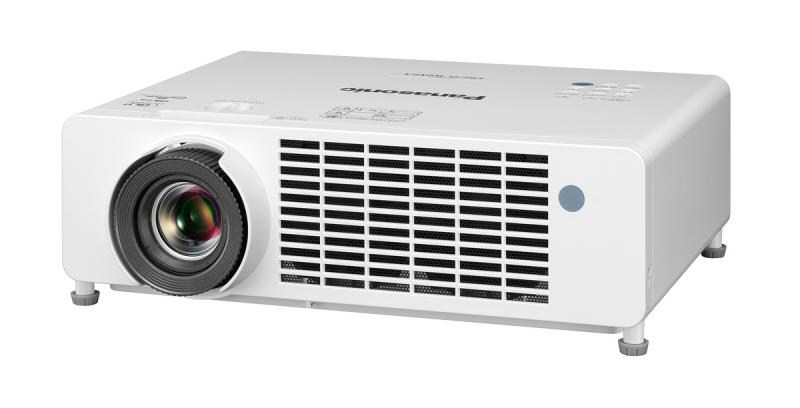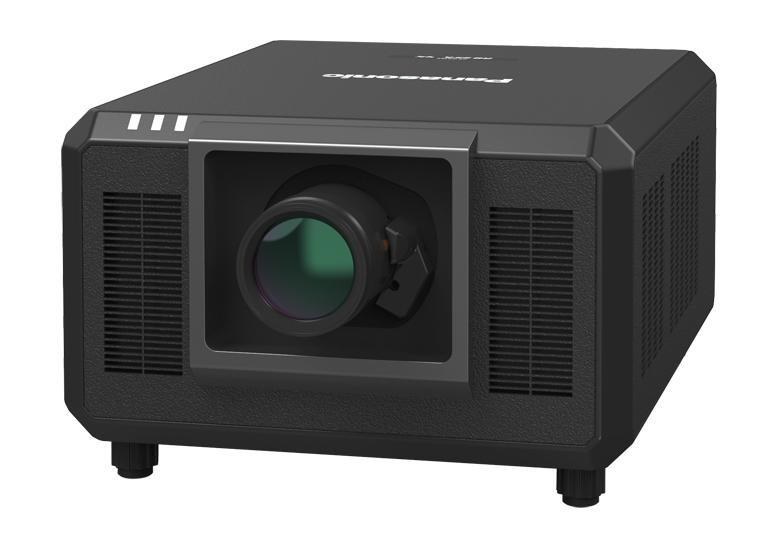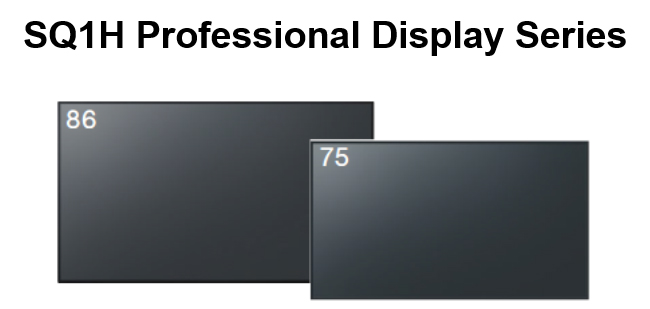This week would have seen the annual running of InfoComm in Las Vegas. The AV industry’s second-largest trade show (after ISE) always attracts a crowd, especially when it’s sited in the Nevada desert. However, Mother Nature had other plans, and the Covid-19 outbreak forced show organizers to move to a virtual, online event.

In addition to a slew of keynotes and courses, manufacturers are conducting their own press conferences to announce new products and services. Panasonic is no exception, and I had a briefing with company executives Scott Wellington and Rudi Vitti a few days ago to catch up on the company’s new display product offerings.
Panasonic a Major Player
Panasonic has always been a major player in commercial AV displays, particularly with large digital signage displays and single-chip and three-chip DLP projectors. The company jumped on the “lamp-free” bandwagon a few years ago with its Solid Shine laser DLP light engines, and was also an early adopter of the HDBaseT twisted-pair audio/video/control signal interface. A good deal of their expertise in projection technology was homegrown, and more of it came on board when the company absorbed Sanyo and its LCD projection operations a decade ago.
As a display manufacturer and wholesaler, Panasonic faces several challenges. First off; the expanding use of LED tiles and walls has put a crimp into the sales of high-brightness projectors for large venues, particularly for rental and staging operations such as touring musical acts. Unlike its competitors, Panasonic doesn’t currently have a play in direct-view LED walls – there was a business unit based in Denver focused on this market, but that operation was closed down a few years back.
For smaller rooms, the on-going tussle between small projectors and large LCD displays means that the company has to play on both sides. Accordingly, Panasonic offers five lines of LCD monitors that range in size from 43 to 98 inches and a line of solid-state projectors for those who want a two-piece big-screen solution.
The Business Model Continues
That business model continues for 2020, with a few twists. Like other Japanese and Korean manufacturing behemoths, Panasonic has been shifting its focus away from products to “solutions,’ focusing more on business-to-business relationships than manufacturer-to-consumer relationships. You can see this shift quite clearly at the annual CES – very little of what’s shown in the Panasonic booth is focused on the average consumer, and most of it represents the “solutions” mindset.
So it went with my press briefing, which was generously laden with “productivity, collaboration, interactivity,” and “transformation.” But I’m a product and technology guy at heart, first and foremost. An expanded line of LCD displays isn’t a big news story. Nor is an upgraded line of laser projectors. These days, both are simply evolutionary, not revolutionary. But as usual, there are some gems to be found in the press releases.
The Gems
The first is a new RGB LED projector, the PT-LRZ35. It’s available with WXGA and WUXGA resolution and is rated at 3500 lumens. This is Panasonic’s first-ever LED projector, and its luminance rating sits at the upper end for discrete red, green, and blue LED light engines. The imager is a single DLP chip, and the advantages of such a design are many: Better color reproduction and saturation without the limitations of a color wheel, which also creates noise as it spins like a whirling dervish. (The projector noise level is claimed to be just 24 dB.) And the annoying rainbow artifact long associated with PWM and color wheels is also gone.

Conventional laser 3DLP projectors get a refresh, too. The PT-RQ35K is a new addition to the large venue line and develops 35,000 lumens worth of photon energy and 4K (3840×2400) resolution from a quad-driven array of 1920×1200 .96” DMDs. Supposedly, at 170 pounds, it has the smallest form factor of any projector in its class.

But that’s not the real news. This model now offers near field connectivity (NFC) to a smartphone or other mobile device. With it, you can connect to read and change basic projector setups just by holding said mobile device against the projector’s touchpoint. And a Remote Preview function lets users watch and verify video content remotely via multimedia control software or a web browser.
Continuing a trend towards even brighter single-chip DLP projectors, the upgraded PT-RZ690, PT-RZ790, PT-RZ890, and PT-RZ990 models are rated at 6,000, 7,000, 8,400, and 9,500 lumens respectively, all lighting up a .67” WUXGA DMD. It wasn’t that long ago that 5,000 lumens in this form factor and resolution was a big deal for classrooms and meeting rooms – now, we’re edging ever closer to 10K lumens, which used to be the exclusive province of the 3-chip projector universe.

Finally, 16 new LCD monitors have debuted this week, and not a single model sports anything less than Ultra HD (4K) resolution. That shouldn’t be surprising, given the collapse of FHD panel manufacturing and bargain-basement wholesale UltraHD panel prices. The TH-86SQ1H (86”) and TH-75SQ1H (75”) represent the top of the line, and both monitors are rated at a surprisingly bright 1,000 cd/m2, which would indicate some sort of full-array backlight is in use. (No power consumption figures were given.)
While the remaining 14 models in the SQE1 and CQE1W lines aren’t nearly as bright, they do have a couple of noteworthy features. First, all models across these lines come equipped four (count ‘em, four!) HDMI inputs, not one or two. Vitti mentioned that was a direct request from classroom and conference room customers, who apparently have a bunch of devices to plug in from wireless presenters to cameras. Having four HDMI inputs is something you’re more likely to find on a consumer TV, and their addition is not good news for manufacturers of presentation switchers.
The other feature worth mentioning is the addition of a USB Type-C port to the usual Type-A connectors. Ostensibly, this is labeled for “mobile device” connections, but I did raise the question of whether these ports supported Alternate Mode for display connections. Lo and behold, they do, but there’s no mention of that in the press releases or preliminary product brochures. Additionally, the SQ1H models come with a pair of Type A USB connectors that “support USB 3.0.” No more details were available. – PP

